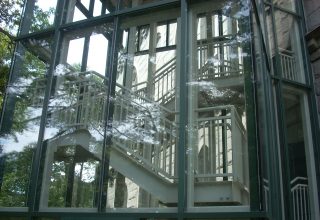
Fire, however, has many fascinating properties. Most importantly, it is an irreversible process: it consumes something that can not be reconstructed. Those of us who live in the San Francisco Bay Area were tragically attuned to this phenomenon during the early 1990s, as we watched the irreversible destruction of our neighbor’s homes in the Oakland Firestorm. These homes could never be “unburned.” There would never be a readjustment in the community that was destroyed by the fire. There could only be the construction of new homes and a new community. Many other processes of change and transformation are similarly irreversible. Avalanches can never be undone, nor can Pandora’s Box ever be closed once the lid is opened and the evil spirits have escaped. Rumors can never be totally dispelled once they are let out of their box, just as the good old times can never be restored, despite the efforts of Walt Disney, Frank Capra and other purveyors of nostalgia.
We are reminded of early childhood experiences. One of us was having a debate with a cousin. This debate like all debates during childhood concerned one of the “fundamental” issues of life. In this instance we were arguing about whether or not anything is impossible. I argued that anything is possible. My cousin argued that some things are impossible and offered an example: “you can’t return the toothpaste to a tube once you have squeezed it out!” I had no good rebuttal to that argument and was very impressed with this evidence. Until recently I had no category in which to place this example of impossibility—or more accurately irreversibility. Many changes in organizations operate like toothpaste that has just been squeezed from the tube. I suppose you could get it back in the tube—but what a mess! And would the tube of toothpaste ever really be the same again? We squeeze out organizational truths in moments of frustration or anger and can never cover them up again (a variation on Pandora’s Box). We tentatively consider a change in organizational structure, but the word gets out and we are soon stuck with this change whether we like it or not. We become bound up in complex and paradoxical relationships and can’t undo them—except by divorce. The equilibrium has been disturbed, chaos often follows, and there is no returning home as the same person we were when we left. Time moves in one direction and can not be reversed.
Download Article
















